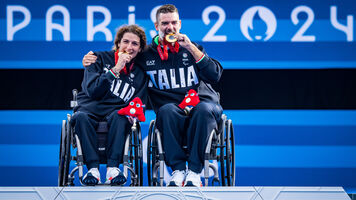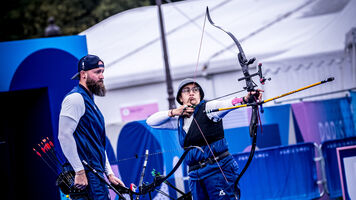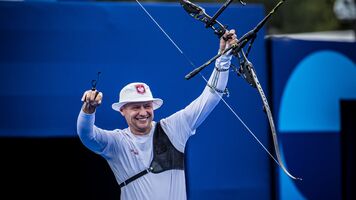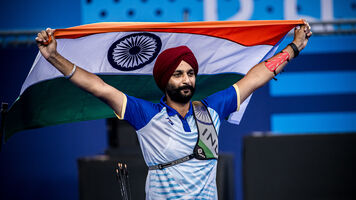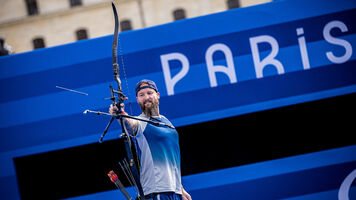Complete guide to archery at the Paris 2024 Paralympic Games
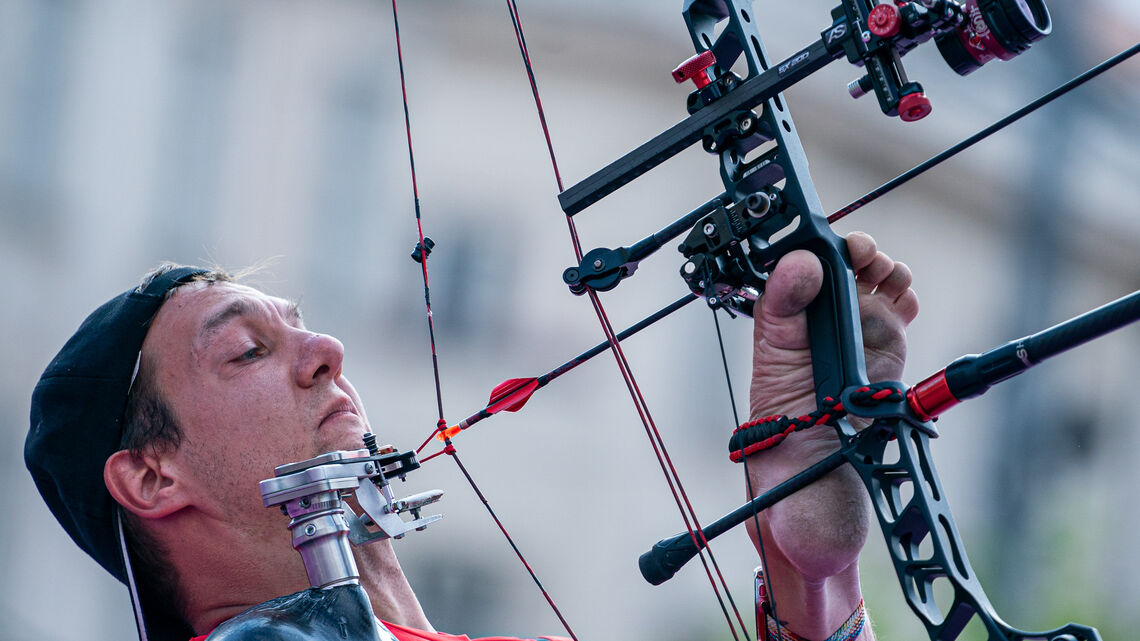
The Paralympics – a quadrennial display of human spirit, the ability to overcome life’s obstacles and sporting excellence. We’re back at Invalides at the end of August for round two at Paris 2024.
There’ll be a spotlight on three archers in particular – Matt Stutzman, Piotr Van Montagu and Sheetal Devi.
All three are feet shooters, being without arms, and all three are serious contenders to become the first-ever Paralympic Champion to use the technique, which was spearheaded by Stutzman himself.
They aren’t the only impressive para athletes set to take to the shooting line.
One-hundred-and-forty archers representing a record 47 National Paralympic Committees are making the trip to Paris, all in pursuit for the nine available Paralympic Champion titles.
For the first time in history, every single match is being broadcast.
(Check listings with local television rights holders. World Archery/archery+ has no rights.)
Key information
What’s happening? Archery at the 2024 Paralympic Games on 28 August to 5 September on the Esplanade des Invalides in Paris, France.
What’s at stake? Nine Paralympic Champion titles.
Who’s competing? Some 138 athletes from a record 47 countries.
What’s the story? The most diverse Paralympic Games ever and a capacity crowd at Invalides, just as it was for the Olympic Games. Korea dominated that event. The story won’t be the same this time – we’re set for a diverse podium, too.
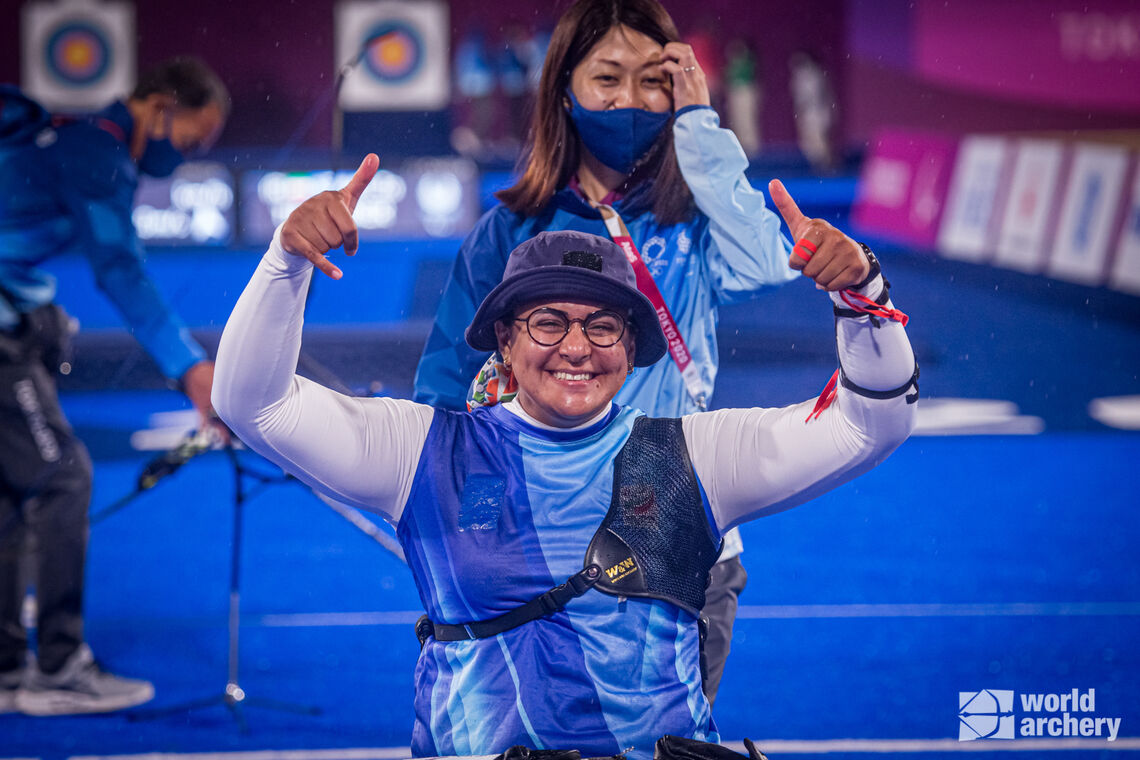
Reigning champions
- Recurve men: Kevin Mather, USA (not competing)
- Recurve women: Zahra Nemati, Iran (not competing)
- Recurve mixed team: RPC (not competing)
- Compound men: He Zihao, China
- Compound women: Phoebe Pine, Great Britain
- Compound mixed team: China
- W1 men: David Drahoninsky, Czech Republic
- W1 women: Chen Minyi, China
- W1 mixed team: China
Schedule
- Thursday 29 August – qualifying
- Friday 30 August – compound eliminations
- Saturday 31 August – W1 women’s finals, compound women’s finals
- Sunday 1 September – W1 men’s finals, compound men’s finals
- Monday 2 September – W1 mixed team finals, compound mixed team finals
- Tuesday 3 September – recurve women’s finals
- Wednesday 4 September – recurve men’s finals
- Thursday 5 September – recurve mixed team finals
Storylines
1) Conspicuous in absentia.
For the first time since London 2012, we’ll have a new recurve women’s Paralympic Champion – because three-time winner Zahra Nemati isn’t competing in Paris.
She will be present in the French capital. Nemati’s well-known as a keynote speaker and activist for women’s rights – in particular to access disability support and sport – and a memebr of the International Paralympic Committee’s athlete board. She’s focusing on that job this time around.
2) Sheetal Devi.
Matt Stutzman was a revelation when he competed at his first Paralympic Games in 2012. An armless archer? Surely not.
Fast forward to 2024, Matt’s at his fourth Paralympics in Paris – and he’s inspired several other archers without arms. None has the spotlight more than 17-year-old Sheetal Devi, the Asian Para Games Champion who is making her Paralympic debut for India this summer.
She‘s a contender, too.
3) The Czech entertainer.
After taking gold in his Paralympic debut at Beijing 2008, David Drahoninsky was runner-up in London and Rio before once again topping the podium at Tokyo 2020.
The soon-to-become five-time Paralympian has made four consecutive finals in the W1 category. Always the entertainer, and sporting his trademark multicoloured hair once more, Drahoninsky’s run over the past decade and a half has been incredible. But he’s down to 14th in the world ranking right now – so can it continue?
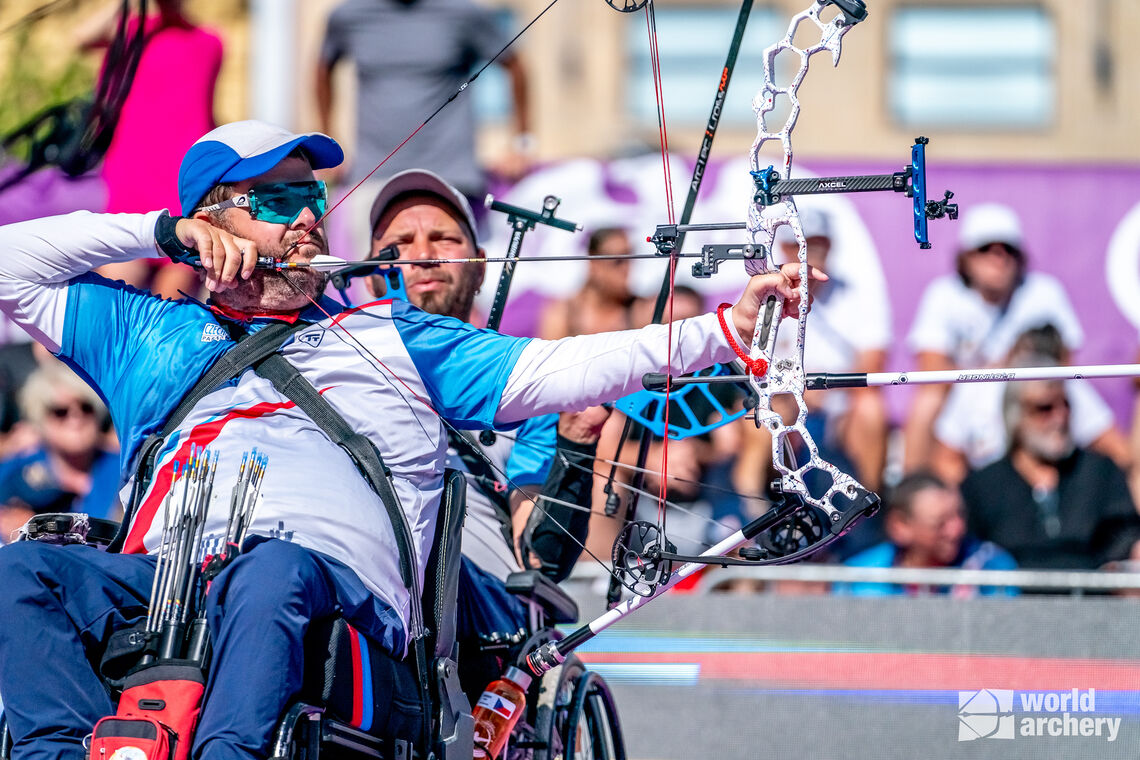
Competition categories
Archers at the Paralympic Games are all classified as para athletes and compete in one of three competition categories, across individual and mixed team (one man, one woman) events.
Recurve archers have an impairment in either the top or bottom halves of their bodies, use recurve bows, and shoot over a distance of 70 metres at targets measuring 122 centimetres in diameter. This category mirrors the competition at the Olympic Games.
Compound archers have an impairment in either the top or bottom halves of their bodies, use compound bows, and shoot over a distance of 50 metres at targets measuring 80 centimetres in diameter but with the outer four rings removed.
W1 archers have an impairment in both the top and bottom halves of their bodies and the torso, use either a recurve or limited compound (without magnified sight and limited draw weight) bow, and shoot over a distance of 50 metres at targets measuring 80 centimetres in diameter.
Format
Competition is split into qualifying and matchplay.
Archers shoot 72 arrows for total score in qualifying to earn a seed for the head-to-head brackets. The seed for the mixed team is decided by the combined total of two archers.
Archers and mixed teams then shoot matches in which the winner advances to the next phase of the bracket and the loser is eliminated, until a champion is crowned. Recurve matches are decided using the set system, while compound and W1 matches are decided on cumulative score.
Matches: Set system
Recurve archers (and mixed teams) shoot series of arrows called ‘sets’. The highest score in a set is awarded two set points. A draw awards one set point each.
The goal of an individual match is to accrue six set points and a set consists of three arrows. The goal of a mixed team match is to accrue five set points and a set consists of four arrows, two per archer.
If an individual match is tied at 5-5 after five sets or a mixed team match tied at 4-4 after four sets, the match is sent to a tiebreak.
Matches: Cumulative score
Compound and W1 archers (and mixed teams) shoot a regulation number of arrows and the goal is to accrue the highest total score.
Individual matches consist of 15 arrows, split into five ‘ends’ of three arrows, and the maximum score is 150 points. Mixed team matches consist of 16 arrows, split into four ‘ends’ of four arrows (two per archer), and the maximum score is 160 points.
If the scores are tied after the regulation number of arrows, the match is sent to a tiebreak.
Tiebreak
In an individual match, both archers shoot one arrow and the archer whose arrow lands closest to the centre of the target wins the match.
In a mixed team match, every archer shoots one arrow and the mixed team with the highest total wins the match. If the totals are tied, then the mixed team with an arrow closest to the centre wins the match.
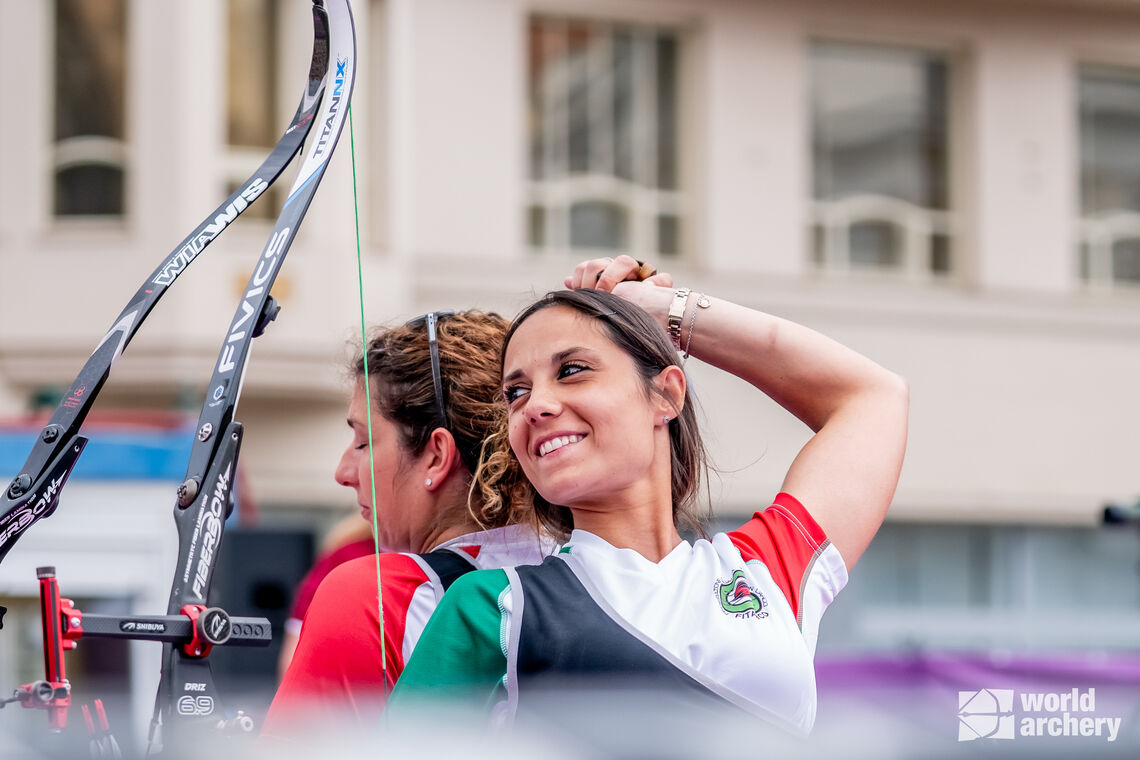
Trivia
Archery has a long history within the Paralympic movement.
The sport was used as a rehabilitation activity for wounded veterans at Stoke Mandeville Hospital by Paralympic founder Dr Ludwig Guttmann in the 1940s. He organised a small competition, which expanded to include other sports over time – and eventually became the first Paralympic Games in 1960.
This is the third consecutive Paralympics to use the Olympic venue after Tokyo and Rio. The last time they were separated was London 2012, which used Lord’s Cricket Ground for the Olympics and the Royal Artillery Barracks for the Paralympics.
Archer Neroli Fairhall was the first athlete to compete in both the Olympics and Paralympics. She competed in the 1980, 1988 and 2000 Paralympics (plus 1972 in athletes) and 1984 Olympics.
The rules for able-bodied and para archery are almost the same. The main difference is that the time limit per arrow in able-bodied competition is 20 seconds per arrow while in para competition it is 30 seconds per arrow.
Competition at the 2024 Paralympics starts on 29 August.






